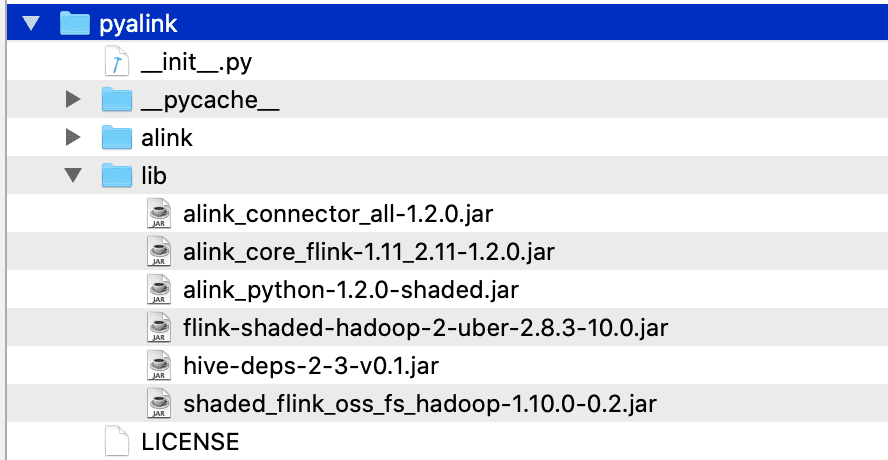To deploy Alink on Flink clusters, some jar files are required to be put with Flink. There are little differences for different Flink environments. This document mainly introduce the deployment of Alink on Standalone and Kubernetes Flink clusters.
The Alink jar files can be obtained from the lib folder of PyAlink.
Refer to Alink Quick start
After installed the PyAlink, you can run python3 -c "import os; import pyalink; print(os.path.join(pyalink.__path__[0], 'lib'))" to get the lib path of PyAlink from the stdout.
The structure of lib is as follows after filesystems jars are also downloaded:
- Copy above jars in the PyAlink
libfolder to thelibfolder of Flink. - Add
classloader.resolve-order: parent-firstin the Flink configuration fileflink-conf.yaml. - Execute
bin/start-cluster.shin the folder of Flink to start a standalone cluster. - Execute
bin/taskmanager.sh startto add more TaskManagers。
Refer to:https://ci.apache.org/projects/flink/flink-docs-stable/ops/deployment/cluster_setup.html
Copy above jars in the Python lib folder to the docker image:
add the following command to the DockerFile of Flink image.
ADD $PY_ALINK_LIB_FOLDER/* $FLINK_LIB_DIR/
Add classloader.resolve-order: parent-first in the configuration file flink-conf.yaml
Then refer to:https://ci.apache.org/projects/flink/flink-docs-stable/ops/deployment/kubernetes.html to deploy the image to Kubernetes clusters.
